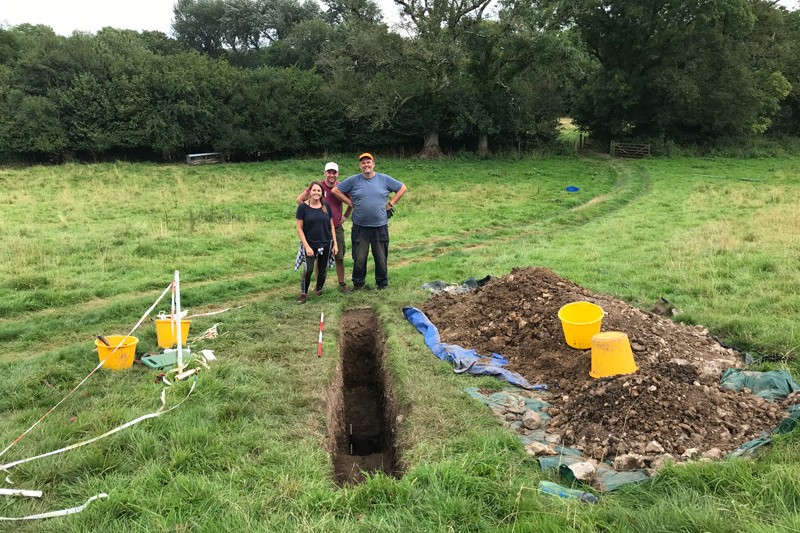BU's Emeritus Professor Nigel Jump writes the next in a series of blogs looking at the impact of Covid-19 on the economy:
CURRENT SITUATION
After a fall in real GDP of 2.2% in Q1, the economy dropped further in Q2, although, on a monthly basis, things appear to have been slightly better in June than in April.
- Productivity (output per hour) fell 3.1% year-on-year in the January-March period, partly reflecting the start of the furlough scheme.
- In Q1, only four sectors were positive (barely): water services, public administration, financial services and real estate. Biggest output falls were in accommodation and food services, education, electricity and gas.
- With the personal savings ratio soaring to 8.6%, consumption declines were worst in transport, clothing and footwear, and restaurants. The banks have seen large increases in funds held in current and deposit accounts: postponed or potential spending?
- The greatest drops in working hours were in accommodation and food services (-24%), but construction, other services, distribution (including retail), manufacturing, education, and transport all recorded falls of 10-15%.
Evidence from recent surveys is slightly better, but far from good.
- The latest (Q2) CBI Industrial Trends Survey revealed its “worst (manufacturing) quarter on record”, with export orders setting an historic low. Respondents expect the pace of output decline to ease in Q3.
- The latest Chamber of Commerce Survey (BCC Q2) shows the majority of Dorset businesses experiencing lower sales (domestic 82% and overseas 71%), orders (81% and 76%), investment (69%) and cash flow (66%).
- The UK purchasing managers’ index (PMI) recovered in June (30 to 47.6) but, with the composite below 50, the economy was still in decline. EU and US PMIs were also under 50. There is concern that the renewed wave of infection in America will disrupt activity again.
- Equally, UK regional composite balances remained weak, even though the pace of decline slowed. For example, in June, the main reading for SW England was 46.4, up from 28.1 in May: less negative but still contracting overall. Orders and employment were falling yet, surprisingly, future optimism improved.
- With more UK sectors ‘opening’ from July 4th onwards, a return to positive territory in Q3 is conceivable, albeit with significant economic scarring: 64% of businesses in the latest ONS Coronavirus Impact Survey say turnover is below ‘normal’ and 44% say they have cash reserves available for less than six months. Recent retail figures and consumer confidence surveys suggest many buyers remain hesitant.
- Employment losses are mounting in many sectors, with 10-15,000+ redundancy announcements in July, from a range of industries: aerospace to retailing. Between March and June, 649,000 people were struck off UK payrolls. Most manufacturers (70%+ in a recent Bank of England Decision Maker Panel Survey) expect to make job cuts this year. BCC said one-third of companies will reduce their workforce in the next 3 months. The Federation of Small Businesses (FSB) claims a third of its members are likely to cut staff as the furlough scheme unwinds, putting 1.7mn jobs at risk and with over half a million businesses now in distress.
CURRENT PROSPECTS
In July, the Office of Budget Responsibility (OBR) published its latest fiscal sustainability assessment. Its views broadly accord with the current, (even more uncertain than usual), professional consensus.
For 2020, it predicts the largest fall in annual real GDP for 300 years with public borrowing of 13-21% of GDP, depending on which assumptions are adopted. The ‘worst’ public sector net debt was projected at over £2.5trillion. By the end of June, net debt/GDP was almost 115%.
The ‘best’ scenario predicts a return to the previous (Q4 2019) GDP high in Q1 2021, with unemployment peaking later at 10%. The middle scenario shows a return by Q4 2022, and a subsequent peak unemployment of 12%. The worst case said no return until Q3 2024, and 13% peak unemployment, (4 million people in 2021).
Before the pandemic, the local (Dorset+) economy had strengths in a number of key industries. These included some high-tech engineering, (such as aerospace and marine), some consumer services, (especially tourism and leisure), and some business services, (as in creative and financial services).
A roll call of leading local companies would have listed many significant national and international players, supported by a raft of small businesses in integrated supply chains and a labour market with approximately full employment.
The economic problems of Dorset+ in the late 2010s were largely the problems of success, (particularly skills shortages, congestion costs and constrained market access), rather than those of failure (high unemployment, low skills and investment).
The economic shock of the Covid-19 lockdown has thrown this up in the air and turned stability into nervousness. Some of our ‘best’ sectors are now in crisis, undergoing the evaporation of final demand and the suppression of supply.
With transport and travel, and other aspects of consumption and investment, under pressure, the structure of the local economy (see table below for pre-crisis % shares of employee jobs) is now more fragile.
Even if the percentage shares do not adjust quickly, whatever the ‘letter’ shape of the recovery, significant structural changes look likely. Many local businesses, their employees and their markets will face and drive new behaviour in terms of product and service delivery, supply chain processes and working practices.
Considering a framework for assessment of the potential for unprecedented structural change:
Anchors are firms or agencies and sectors that form the foundation of a local economy. Parts of the public sector anchors have been strongly affected in the crisis. The questions now are about delivery and funding changes, such as on-line health consultation, social care and educational proximity, as well as local government more generally. Meanwhile, private sector anchors, including some financial services, and engineering and consumer manufacturers, are battening down for a long recession.
Beacons are entities that shine a light on ‘best practice’ within and between industries. Best practice involves leadership in technology, skills, and markets as well as process practices and behaviours. Beacons are found amongst the more competitive providers of local business and financial services and some cutting-edge manufacturing. The fracture of ‘normal’ demand and supply flows has dimmed but not eliminated some of these advantages. It is not clear whether or not this is temporary. The broad target must be to retain as many beacons as possible.
Catalysts are activities where new ideas are taking hold, which may be disruptive (e.g. on-line versus high street retailing) yet may offer hope of strong future growth and development. These are likely to involve AI and other technological and process solutions to new patterns of demand and supply. They may cover aspects of ‘just in case’ supply (building resilience) and environmental sustainability. It may be particularly pertinent for some of Dorset’s creative industries and business services.
Drifters are sectors and operations that are relatively uncompetitive and need to raise their game if they are to survive the downturn and a slow recovery. Some of these, especially the so-called “zombie” companies which have hung on over the last decade of low productivity, weak real incomes and profits, and government austerity, will not recover from this recession. They include, in particular, a number of consumer services (e.g. parts of the traditional high street and, perhaps, the ‘visitor’ economy). The scope of these trends is difficult to predict but may affect the weaker businesses across all sectors.
Many of the long-term beacons and catalysts that can be tomorrow’s anchors are now in short-term distress. Therefore, a key question is: will the current strains and stresses force resources to be reallocated effectively and efficiently towards future ‘positive prospects’ as growth recovers?
The optimist would say “yes, it will”. Careful strategic planning and re-assessment of investment and employment is warranted. A process of entrepreneurial innovation (towards the realities, indeed opportunities, of a post-pandemic future) seems likely, with increased localism, technological change and skills development.
Some anchors and beacons are already planning strategically for the ‘new normal’: seeing business prospects in novel production and consumption (such as “at-home” work and “on-line” service) and other trends that have been accelerated by the lockdown.
The pessimist would say “no”. Some good firms and jobs are likely to be lost in the year or so ahead and there may well be some permanent scarring to both individual capability (especially for some young workers’ career prospects) and business capacity.
The issue is how quickly increased productivity (growth and levels) can mend those scars. Healing will need the support of dynamic incentives from the state: 1) the regulatory, trade and fiscal environment provided to firms, the self-employed and employees; 2) the health and income security provided to consumers and households; 3) the conservation and preservation of natural resource capital and environmental services flow. It will also require co-operative action amongst the local business, education and public communities.
Reality is likely to involve elements of both optimism and pessimism. One interpretation of a strategy for the local economy in the 2020s might include:
If in doubt, assume the best, but prepare for the worst. Through higher productive investment, firms are more likely to help the recovery and mitigate risk. “Do unto others as you would have them do to you” but do not be afraid to ask searching questions in order to understand the strengths and weaknesses of rivals, suppliers and customers. Be realistic about what is achievable and sustainable.
Look for “win wins” – the economy is not a zero-sum game: good for one can and should be good for all. This can be summarised as “co-operate to compete”. Beacons and catalysts need to spread positive development ideas as widely as possible, demanding it of suppliers and forcing it on competitors. The anchors should promote and support local development. Co-operation in promoting market penetration (including more local, environmentally robust, supply chains), technical innovation and skilled workforces is vital. It must make a sustainable economic reality of increased productivity-led growth. Competition that is good for local profits, jobs and incomes, must support community well-being as well as goals of a “global Britain”.
There is not a clear route to a return to “normal”. Homo Economicus, driven by monetary efficiency and market effectiveness, will not be enough for total well-being this time. There is also a need for efficacy and equity. The basic ‘rules’ of economics have not been revoked (see a future blog) but we are not just consumers and producers. The values we adopt and price into our decision making will need to be profound, reflecting changes in circumstances and desires throughout the 2020s.



